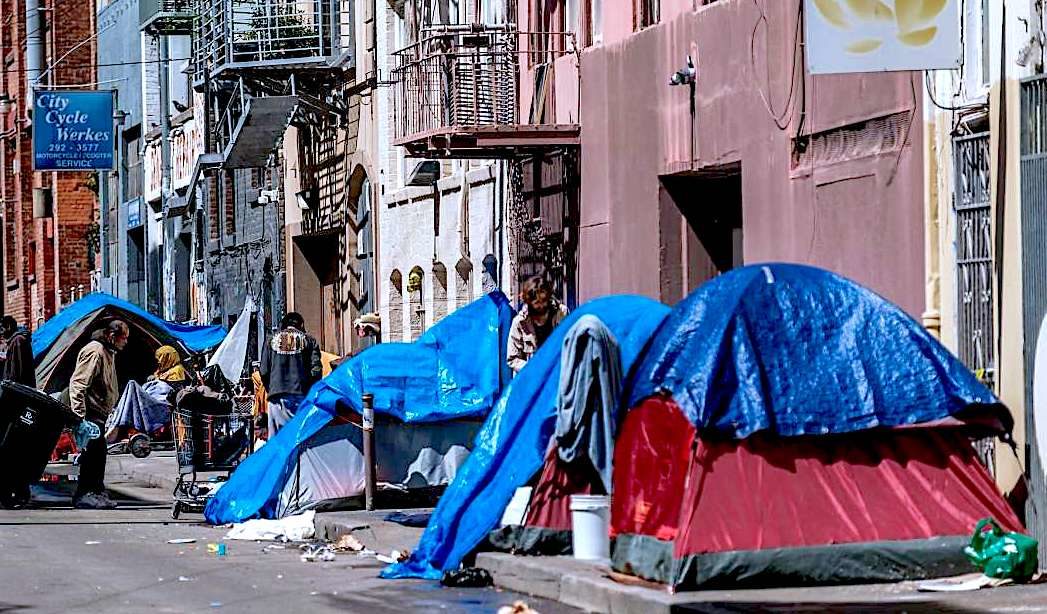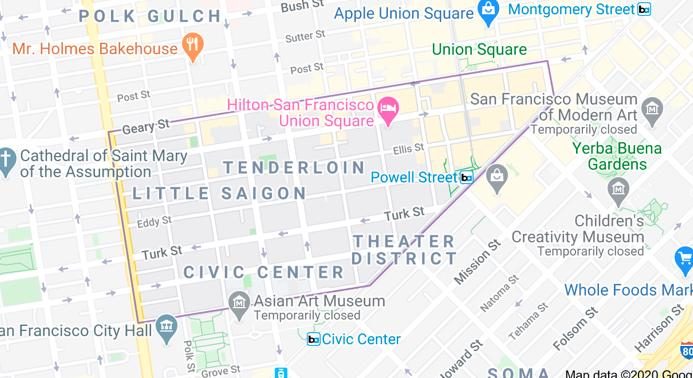
None appear to be directly related to the coronavirus that is spreading throughout the city, according to preliminary Department of Public Health data obtained by The Chronicle. It is not clear how many people were posthumously tested for the virus.
Forty-eight homeless people — an average of six per week — died in San Francisco between March 30 and May 24, according to Dr. Barry Zevin, director of the Department of Public Health's Street Medicine Team. For comparison, 14 people died in the same time period last year.

The data is preliminary; exact causes of death are pending until the medical examiner's office finalizes a report. But, Zevin said, most of the deaths were likely related to substance overdoses and were highly concentrated among unsheltered people in the Tenderloin.
While the deaths did not appear to be directly related to COVID-19, the numbers suggest that disruptions to services and shelter caused by the pandemic may have been a contributing factor, Zevin said in an interview with The Chronicle. San Francisco has dramatically cut its shelter capacity in recent months so people can stay socially distant, and other services, like drop-in centers and community clinics, have closed, cut capacity or reduced hours.
"Congregate settings are a huge danger in terms of COVID spread, and that's why we made these changes. I think it was the right decision, but it comes with consequences," he said. "And it is very painful."
Some of the circumstances of death outlined by Zevin in an email obtained by The Chronicle include:
Four deaths in shelter-in-place hotel sites. One of the deaths was likely related to a medical reason, while the other three were most likely drug overdoses.Supervisor Matt Haney, whose district includes the Tenderloin:
One person died within hours of visiting San Francisco General Hospital's Emergency Department.
Two people died within three days of being released from jail.
One person who died was found positive for the coronavirus in a postmortem test, but was believed to have died from "catastrophic peritonitis," a life-threatening infection.
One person died who recovered from COVID-19, which they contracted as part of the massive outbreak at MSC South, San Francisco's largest homeless shelter.
"It's awful. We have a very high rate of deaths of people who are homeless normally. And this has been exacerbated because people are more disrupted and disconnected than usual."San Francisco has moved more than 1,200 people — such as those living on the streets or in densely populated apartment buildings — into hotel rooms, where they receive food and access to behavioral health services. The people moved into hotels are typically older and have underlying health conditions that make them more vulnerable to the virus.
Zevin estimates that since mid-March, the DPH Street Medicine Team has tripled the usual number of people starting buprenorphine, a drug that helps mitigate withdrawal symptoms from opioids. He also said outreach teams like the Street Medicine Team, with Homeless Outreach Team and Harm Reduction Therapy Center, are doing outreach to those on the streets every day.
While Zevin says the city has likely saved many lives by doing outreach and moving people indoors, there are still thousands of people on the city's streets suffering from drug addiction, poor hygiene and health.
The number of tents and makeshift structures throughout the Tenderloin neighborhood exploded by 285% between January and May, according to city data. The city as a whole saw a 71% increase in tents and structures during that period.
Meanwhile, drug overdoses in the city were already trending upward with the explosion of fentanyl on San Francisco's streets. Santa Clara County has also seen an increase in fentanyl-related deaths, according to county health officials.
Zevin said:
"Over the past one to two years, fentanyl went from something that was rare in San Francisco to something that was very common in San Francisco. And like the rest of the country, when fentanyl comes to town, overdose deaths go up."The conditions in the Tenderloin have grown so dire that neighborhood residents, business owners and UC Hastings College of the Law sued the city in federal court this month. Two days after the lawsuit was filed, Mayor London Breed rolled out a plan to improve the conditions in the 49-block neighborhood, which included moving people into a sanctioned encampment in the Civic Center. The plan also calls for painting lines on sidewalks every 6 feet in heavily populated camping areas, and more rigorous enforcement of social distancing.
Still, several weeks after the plan was rolled out, there seems to be little improvement.
Sam Dennison, co-director of Faithful Fools, a nonprofit fighting poverty in the Tenderloin, said:
"What is not surprising is that poverty is twice as deadly in this circumstance. Clearly we need a dedicated health policy that really examines both the conditions of people living on the streets, and also how we address their needs when an emergency like this comes up. They should not be the last people we think of. They should be the first."
About the Author:
Trisha Thadani is a City Hall reporter for The San Francisco Chronicle. She previously covered work-based immigration and local startups for the paper's business section. Before joining The Chronicle, she held internships at The Boston Globe, USA Today, The Wall Street Journal, and was a Statehouse correspondent for the Worcester Telegram & Gazette.




Comment: As conditions rapidly and radically changed to accommodate the demands and restrictions of 'coronavirus mandates', the last in line and most in need were unable to cope with increasing levels of vulnerability. Removals of stability and changes in 'crutch access' spelled disaster for both physical and psychological wellbeing of those most at risk - and not just in San Francisco.